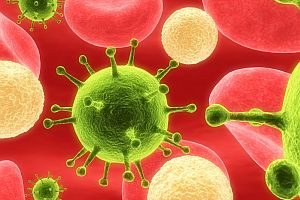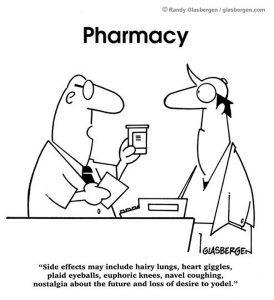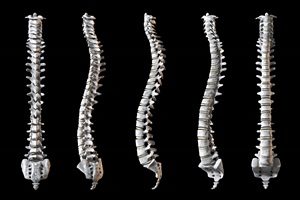The Ultimate Healthy Blueberry Muffin Recipe
[amd-zlrecipe-recipe:1]
Here is a healthy, low-sugar and no refined sugar recipe! You might think about making a batch for Sunday brunch this weekend!
[amd-zlrecipe-recipe:1]
Here is a healthy, low-sugar and no refined sugar recipe! You might think about making a batch for Sunday brunch this weekend!

Sugar is in almost everything we eat. In the typical western diet, enough sugar has been added to food products to bring our consumption of the sweet stuff up to 22.7 teaspoons per day. It is added to processed foods to extend shelf life and enhance flavor and texture. While we know that sugar contributes to weight gain, diabetes and heart disease, it’s still hard to resist. Why? Much of the answer to that question has to do with the way humans have evolved to survive in times of scarcity.
Our ancestors who had developed a taste for sugar were able to add to their body fat, which helped to keep them alive during periods of famine. This in turn allowed them to pass their sweet-loving genes on to their progeny. A study conducted by researchers at Washington University found that we are programmed from birth to crave sweet things. Human breast milk is very sweet due to the concentration of the sugar lactose, so from day one we learn to develop a sweet tooth.
One study showed how even the mere expectation of sugar can affect our cognitive ability. Scientists found that when study subjects swished sugar water around in their mouths and then spit it out, they performed better on cognitive tests than the subjects who had swished water that had been artificially sweetened. And there is a good reason why sugar is addictive. Eating sugar prompts the release of the hormone serotonin from the same area of the brain that responds to heroin and cocaine, inducing a feeling of happiness and euphoria.
It’s not always obvious where sugar is hiding in the foods we eat. While our consumption of table sugar is down, the amount added to processed foods is increasing. Many people are surprised to find how much sugar is added to such things as bologna (1.18 tsp. per 4 slices), ketchup (1.77 tsp. per 3 tbsp.) and low-fat fruit yogurt (6.16 tsp.). A couple of spoons of barbecue sauce have about as much sugar as a glazed donut! Add in the sugars typically contained in soups, sauces and breads, and it’s easy to see why obesity is becoming such an epidemic. The more we get, the more we want. A sudden rush of sugar spurs the release of insulin, which causes the infamous “sugar crash” and makes us crave even more to combat it.
However, it is possible to overcome an addiction to sugar, just as it’s possible to overcome an addiction to any other substance. Gradually use less where you can, such as in coffee or tea and in your breakfast cereal. You can also reduce or eliminate your consumption of soda (including artificially sweetened soda, which still makes you crave the sweet taste) and water down any fruit juices you may drink. After a while, your body does adjust to the taste. After a few months, if you suddenly are given coffee with sugar in it, you may find it tastes odd. Try to avoid buying store-bought desserts, and if you make your own, reduce the amount of sugar called for in the recipe. Many baked goods can use unsweetened applesauce as a substitute for 2/3 of the sugar required.
Our society has made it difficult to resist sugar, but it’s not impossible, and the less sugar you eat, the better it will be for your overall health.
At Oblander Chiropractic, we are working hard to help our patients live lives of health and wellness. As a part of that effort, we are going to be sharing recipes that replace refined sugar with natural sugars. Be sure to watch our posts for those recipes!
 We talk a lot about the importance of reaching a goal weight and how to stay motivated. Sometimes, though, it still seems like a laborious task. If you’re carrying extra weight, you probably already know there are a myriad of health-related reasons to slim down. While it may seem impossible, little steps will carry you bit by bit down your weight loss path to your ultimate goal.While keeping your eyes on the big prize, it may help you to realize that even small changes in your weight may improve blood sugar, blood pressure, heart health, reduce cholesterol, and decrease your chances of developing diabetes. We’ve shared many motivational tips, but did you know that when you lose 10% of your bodyweight, you are instantly healthier? There’s no doubt that dropping weight will make you look and feel better, but there are numerous other benefts that you can realize while on your weight loss journey, which have nothing to do with how you look in your skinny jeans. Read more: Strategies for successful maintenance after weight loss.
We talk a lot about the importance of reaching a goal weight and how to stay motivated. Sometimes, though, it still seems like a laborious task. If you’re carrying extra weight, you probably already know there are a myriad of health-related reasons to slim down. While it may seem impossible, little steps will carry you bit by bit down your weight loss path to your ultimate goal.While keeping your eyes on the big prize, it may help you to realize that even small changes in your weight may improve blood sugar, blood pressure, heart health, reduce cholesterol, and decrease your chances of developing diabetes. We’ve shared many motivational tips, but did you know that when you lose 10% of your bodyweight, you are instantly healthier? There’s no doubt that dropping weight will make you look and feel better, but there are numerous other benefts that you can realize while on your weight loss journey, which have nothing to do with how you look in your skinny jeans. Read more: Strategies for successful maintenance after weight loss.
Fewer Asthma and Allergy Symptoms
The link may not be immediately obvious, but new research has found that for some people, being overweight can make their asthma and allergy symptoms worse. Carrying excess weight on your body puts a burden on the adrenal glands, and your adrenal glands help manage asthma and allergies. In addition, being overweight strains your respiratory system and can make allergy symptoms worse.
Arthritis Relief
Not only does losing weight help relieve arthritis pain, it can also help keep you from developing arthritis—the less you weigh, the less stress on the joints. In addition, recent studies have shown that when you have arthritis and you lose weight, your pain is reduced and your joint functionality significantly improves.
Less Foot Pain
You may not really think about it, but excess weight can put a lot of pressure on your feet, even if you don’t have arthritis. In a recent study, people who had lost an average of 90 pounds found that their incidence of foot pain lowered by 83%. This is understandable because your feet support your entire body, and therefore your entire body’s weight. Relief from foot pain is motivation enough for losing weight.
Glowing Skin
There are numerous ways being overweight may affect your skin, which is the body’s largest organ. Both skin elasticity and color can be altered by lack of proper nutrition, and a diet high in carbohydrates and sugar can cause pale skin and skin tags. Darkness around the eyes can also signal poor nutrition, such as iron defciency, diabetes, protein anemia, or stress.
Better Mood
When you are overweight, your entire system will be out of balance, including the hormones that affect your mood. Losing weight may increase your overall sense of well-being and decrease feelings of depression. Many overweight people suffer from extreme depression, and depression may increase a person’s chances of being overweight, setting up a cycle that is hard to break.
Improved Cognition and Memory
A recent study found that older adults who were overweight scored worse on cognitions tests than adults who were at a healthy weight. Past studies have linked excess weight in animals to cognitive decline, but little has been previously understood about the interaction between obesity and the brain. However, new research suggests that being overweight weakens the blood-brain barrier, and this allows substances manufactured by fat to flow to the brain. Researchers also discovered that 12 weeks after weight loss, memory significantly improves.
Sounder Sleep
If you’ve ever suffered from insomnia, you understand the benefits of a good night’s sleep. During sleep, your cells are repaired and your brain processes and remembers the day’s events. In fact, the most common prescription for sleep apnea is weight loss. In studies involving people with diabetes and sleep apnea, those who lost a greater amount of weight had the most significant drop in sleep apnea symptoms. It only takes a weight loss of 5% in obese people to start seeing results.
Reverse Type 2 Diabetes
Almost everyone has either heard or read about the global epidemic of type 2 diabetes and its link to obesity. It may be a surprise for many to learn how effective losing weight can be at reversing the impact of type 2 diabetes. In fact, many people can avoid the disease altogether by achieving and maintaining a healthy weight. Studies have shown that type 2 diabetes patients on a restricted eating plan, such as the doctor-supervised ChiroThin Weight Loss Program, were able to lower their blood sugar and insulin levels to normal within seven days. If you have type 2 diabetes, reversing the condition and avoiding future complications could just be the best benefit of your weight-loss journey.
Economic Savings
Many complain that eating a healthy diet is costly, and sometimes it does seem like fast food, junk food, and convenience food is cheaper. However, in the long run, slimming your waist can plump up your wallet. When you calculate the cost of medical bills, missed days at work, short-term disability, low-productivity, workers’ compensation, and more, there is a real difference between the financial health of obese people and their peers who have healthier weights. There’s nothing wrong with wanting to look good in your clothes, but the harsh reality is that being overweight can take up to 20 years off your life. Reducing your weight by even 5% can have a positive effect on your health, and it is a great beginning for your transformation. If you are ready to start your weight loss journey, call our office at Oblander Chiropractic to find out more about the doctor-supervised ChiroThin Weight Loss Program.
The office phone number is 406-652-3553
 We’ve all heard that calcium is crucial for preventing bone and joint problems, but new research suggests there may be another mineral we need to be mindful of: zinc. In particular, a study suggests that levels of zinc within the cartilage cells may help to explain why tissue destruction occurs in patients with osteoarthritis.
We’ve all heard that calcium is crucial for preventing bone and joint problems, but new research suggests there may be another mineral we need to be mindful of: zinc. In particular, a study suggests that levels of zinc within the cartilage cells may help to explain why tissue destruction occurs in patients with osteoarthritis.
Arthritis is a leading cause of disability in the world, affecting 52.5 million adults in the US alone. Despite the prevalence of osteoarthritis, there are currently no cures to stop the progression of cartilage destruction that takes place in individuals with the condition. Researchers are still attempting to understand what happens at a molecular level to cause the tissue degradation.
Osteoarthritis results in the break down of cartilage between the bones, causing joint stiffness and swelling. Tissue destruction is caused by proteins called matrix-degrading enzymes, which are produced by cells within the cartilage. Matrix-degrading enzymes need zinc to survive, which led researchers to hypothesize that zinc levels play an important role in osteoarthritis.
Using lab mice, the researchers found that a protein called ZIP8 is responsible for transporting zinc within the cells, setting off a chain of events that eventually results in cartilage destruction. Their findings suggest that treatments to deplete zinc in the cartilage cells or inhibit this ZIP8 function may help to stop osteoarthritis. If the research is confirmed in future studies, keeping zinc levels in check could become an integral part of osteoarthritis treatment.
Many patients with osteoarthritis find that it can be successfully managed by a conservative, multimodal treatment, including exercise, nutrition, and chiropractic care. Research suggests that a combination of chiropractic and exercise can significantly ease symptoms in patients with osteoarthritis in the knees, hip, and hands.
Article was written by Marissa Luck and is shared from www.chironexus.net
References
Zinc may be missing link for osteoarthritis therapies. Medical News Today. February 17, 2014. http://www.medicalnewstoday.com/releases/272658.php.
Cell, Kim et al. Regulation of the catabolic cascade in osteoarthritis by the zinc axis.
 People are becoming increasingly aware of the dangers that can result from the overuse of antibiotics. When antibiotics were first discovered in the early 20th century, researchers believed that they had found the key to conquering many deadly diseases. Since that time, antibiotics have certainly helped to cure diseases that once wiped out large parts of the population. However, there is growing evidence that antibiotics are now being used too frequently, and that they are often being used in inappropriate circumstances. This has led to many previously curable diseases becoming antibiotic-resistant, which means that a cure now requires the use far stronger antibiotics. In fact, some diseases have now become resistant to nearly all antibiotics. It is obvious that if antibiotic use continues in this way, we may have a major health crisis on our hands.
People are becoming increasingly aware of the dangers that can result from the overuse of antibiotics. When antibiotics were first discovered in the early 20th century, researchers believed that they had found the key to conquering many deadly diseases. Since that time, antibiotics have certainly helped to cure diseases that once wiped out large parts of the population. However, there is growing evidence that antibiotics are now being used too frequently, and that they are often being used in inappropriate circumstances. This has led to many previously curable diseases becoming antibiotic-resistant, which means that a cure now requires the use far stronger antibiotics. In fact, some diseases have now become resistant to nearly all antibiotics. It is obvious that if antibiotic use continues in this way, we may have a major health crisis on our hands.
The first thing to be aware of is that antibiotics are not effective in the treatment of viruses. They only treat bacterial infections, certain fungal infections and parasites. For diseases such as the common cold, flu or bronchitis, antibiotics are completely ineffective and their use in cases such as these will only contribute to the development of antibiotic-resistant bacteria. You should not ask your doctor to prescribe antibiotics if you have a sore throat or the stomach flu, for instance. According to the Centers for Disease Control and Prevention (CDC), antibiotics were prescribed for an acute respiratory infection in 68% of visits to the doctor. However, 80% of those prescriptions were unnecessary.
Antibiotics are often an appropriate treatment for conditions such as severe sinus infections that last longer than two weeks, ear infections, bladder infections and skin infections. These are frequently due to a bacterial or fungal infection, and treating them with antibiotics is effective.
If you have been prescribed an antibiotic, it is very important that you take it exactly as directed by your physician. If your symptoms happen to clear up before the entire course of antibiotics is completed, you must still continue to take them as prescribed. This is because there may still be a few lingering bacteria in your system, and—if they are not all killed—the strongest ones may survive to produce new generations of ever stronger bacteria that might make current antibiotics less effective.
Some doctors feel pressured by their patients to prescribe something, whether it’s really going to be helpful or not. A study published in the journal Pediatrics found that pediatricians will prescribe antibiotics for children 62% of the time if parents expect them to, and only 7% of the time if the parents do not expect an antibiotic prescription. Do not put pressure on your doctor to prescribe antibiotics for your condition. He or she is the best judge as to whether antibiotics are appropriate.
Also, keeping adjusted helps keep your immune system at its best. To avoid catching colds and other viruses, be sure to keep you and your family adjusted! Call our office at 406-652-3553 if you need to schedule an appointment with Dr. Oblander!
 There is no medical definition for a “superfood”. Food manufacturers are eager to use the word to promote sales of their products that contain traces of supposed superfoods such as blueberries, pomegranates and chocolate. The Oxford English Dictionary defines a superfood as “a nutrient-rich food considered to be especially beneficial for health and well-being.” However, there are no set criteria about what makes a food nutrient-rich. Most superfoods are high in antioxidants and phytonutrients relative to other foods. However, if you were to eat only one of these superfoods to the exclusion of all else, you would be seriously deficient in many of the nutrients your body needs in order to stay healthy. So what exactly is the science behind the idea of superfoods?
There is no medical definition for a “superfood”. Food manufacturers are eager to use the word to promote sales of their products that contain traces of supposed superfoods such as blueberries, pomegranates and chocolate. The Oxford English Dictionary defines a superfood as “a nutrient-rich food considered to be especially beneficial for health and well-being.” However, there are no set criteria about what makes a food nutrient-rich. Most superfoods are high in antioxidants and phytonutrients relative to other foods. However, if you were to eat only one of these superfoods to the exclusion of all else, you would be seriously deficient in many of the nutrients your body needs in order to stay healthy. So what exactly is the science behind the idea of superfoods?
While we would like to believe that if we eat certain foods we can stave off illness and keep aging at bay, the truth is that it’s not so easy. Although there is no doubt that a diet consisting primarily of fruits and vegetables is one of the keys to healthy longevity, it is also what you don’t eat and do that is important. For instance, if you eat a breakfast of blueberries and pomegranates in a bowl of oatmeal, along with a cup of green tea, that does not mean that your health will improve overall if for lunch you have a bucket of fried chicken, French fries and a 64-ounce Coke, followed by a cigarette.
The majority of scientific studies indicating that there may be some positive health effects associated with the nutrients contained in certain foods were conducted in a laboratory. In general, high levels of nutrients are used in these studies—usually far more than what can be consumed in a normal diet. For instance, the compound resveratrol that studies have shown to be heart-healthy and to guard against prostate cancer is found in grape skins only in very small amounts. So although “the French paradox” (why the French have low rates of heart disease despite a rich diet) is often partially attributed to the regular consumption of red wine, in fact, you would have to drink 40 liters of wine a day to get the same amount that was shown to benefit the health of mice in these studies.
The positive results of studies performed in test tubes on a few human cells and studies performed on mice do not necessarily translate into health benefits for the wider population. The effect of a single nutrient on human health is difficult to pinpoint, as we all eat a combination of foods. Some nutritional benefits may only occur in the presence of other nutrients in the same food, or even in a different food eaten at the same time. Iron absorption, for example, is boosted when a food rich in vitamin C is eaten at the same time.
The best nutritional advice someone can follow if they’re interested in maintaining good health is to eat a wide range of whole foods, and (even more importantly) to avoid foods that are bad for you such as processed foods and hydrogenated oils. As the European Food Information Council advises, “A diet based on a variety of nutritious foods, including plenty of fruits and vegetables, remains the best way to ensure a balanced nutrient intake for optimal health.”

We know that many people feel that it is easier to take a pill than to take care of themselves. It may seem easier in the short term but in the long run, it is never the solution for maximizing your health and longevity. It is now estimated that 95% of all cancers are life-style related. Other health such as heart disease. diabetes, and arthritis are most often related to a person’s lifestyle as well. If you want to be healthy and to age gracefully, the best way is to start improving your lifestyle choices today! If you have any questions on how you might do that, be sure to contact our office!
Today, we are sharing a great article from the Sparman Clinic Blog!:
Many side-effects associated with prescription medication can be more detrimental than the condition they are treating. The best way to avoid having to take prescription medication is to take care of yourself through diet, exercise, and natural preventative supplements.
Why the Push For Prescription Medication?:
The pharmaceutical industry is a booming business. Americans spend over $200 billion per year on prescription medication. While many of these medications have helped people recover and live healthy lives, there is a potentially dangerous situation that can result from over-medication (taking an excessive amount of prescription drugs) or using drugs that come with a high-risk of hazardous side-effects. These side-effects can be overlooked when it is seen as a solution to a painful or life-threatening health condition.
What are Some Potential Side-Effects?:
Depending on the type of medication you are choosing, many may only mask or slow the symptoms of a condition, rather than heal. In the process, some negative side-effects can emerge, causing discomfort or health risks. Depending on other medications or a person’s physical make-up, there can be different reactions with different people.
How Can You Reduce Your Risks?:
The best way to reduce your risk of negative side-effects with prescription medication is not taking any! While there are some conditions where this is not an option, many health conditions and diseases can be prevented through diet, exercise, and the use of natural supplements. Preventative care is essential to a long and healthy life free from reliance on prescription medication. Make sure your diet is full of raw, organic fruits and vegetables that provide the essential vitamins and minerals needed for healthy body functions. Exercise should be a regular part of your routine; this keeps your heart pumping.
Why Choose Natural Supplements?”:
If you are looking for additional ways to keep your heart healthy as you age, a good choice can be a natural supplement. These supplements may supply vitamins, minerals, and antioxidants to help you meet your nutrient needs. Using a natural supplement in conjunction with a healthy lifestyle can greatly reduce your risk of heart disease and improve your quality of life.
Overall, your health is in your hands. There is a lot of controversy in the pharmaceutical industry and what works for someone else, may not work for you. Reduce your risk of dependence on medication which could come with some serious side-effects by taking care of your health through diet, exercise, and natural vitamin supplements for a well-rounded lifestyle.

Bodily movement is assisted by over 150 fluid-filled sacs called bursae. Bursae help to cushion your bones, ligaments, and tendons as they move against each other. When in good health these bursae ensure that your joins have a full range of motion. However, these sacs can become swollen and irritated, creating a condition known as bursitis.
The most common cause of bursitis is overuse of the joint. Repetitive movements can irritate the bursae, leading to pain, swelling, and tenderness. Common movements that may lead to bursitis are extensive kneeling (scrubbing the floor or laying carpet, for example), lifting heavy objects (lifting a bag of groceries into the car), and athletic injuries (an aggressive tennis swing). These movements cause the sac to fill with fluids. The resulting swelling puts pressure on the tissue around the sac, causing pain and tenderness.
Other less-common causes of bursitis include gout and infection. Gout crystals can form in the elbow, causing pain and inflammation. Bursae in the knee and elbow lie just below the skin. This leaves them vulnerable to puncture injuries, which can lead to infection.
People become more susceptible to bursitis as they age. Because the shoulder is the most used joint in the body, it is the place where it is most likely to be felt. People over the age of 65 should be especially cautious when carrying out activities that put stress on the shoulder joint.
Treating bursitis begins with conservative measures. Because bursitis due to injury and repetitive movement often goes away on its own, these treatments focus on relieving pain and making the sufferer more comfortable. Treatments for this situation include ice packs, rest, and over the counter anti-inflammatory pain relievers (such as Aleve or Advil).
In more severe cases, a physician may inject a corticosteroid into the inflamed sac. He or she may also use a needle to draw fluid out of the bursae, relieving pressure and quickly reducing pain. In very rare cases of persistent bursitis, surgical intervention may be necessary to remove the problematic bursa.
Part of bursitis treatment is giving the body enough rest to heal the inflamed bursae. Patients should be careful not to overuse the affected area. Immobilization is best, as is getting plenty of rest. After the swelling and pain have receded, patients should be careful in how they treat the problematic area to reduce the chances of the problem recurring.
Bursitis can be painful, but for most people the discomfort will fade with time and rest. If the pain lasts for more than a week or two, or if it becomes so intense that you cannot carry out your daily activities, consult with your doctor.

Having a misaligned spine (also called a spinal subluxation) can negatively affect your daily life in a number of ways. It can not only cause pain in the back and neck, but can also cause pain in the rest of the body because of the pressure that the misaligned vertebrae place on nerves in the spinal column. For example, many people suffer from sciatica (a condition in which pain can be felt shooting down the leg as far as the foot) due to a misaligned vertebral disc putting pressure on the spinal nerve roots. A chiropractor can diagnose if your pain is due to your spine being misaligned and can perform a spinal adjustment to restore proper alignment and range of movement, relieving pain.
Spinal subluxations are very common. They occur when one or more of your 24 bony vertebrae (most people actually have 33 vertebrae counting the nine that are fused to form the sacrum and coccyx) are pulled out of alignment with one another. This can happen for a variety of reasons. Among the most frequent contributors to spinal misalignment are an injury, a sudden jar, fall or trauma, bad posture, stress, inactivity, obesity, repetitive motions and lifting something improperly. When your spine becomes misaligned, your range of motion can become more restricted, with or without accompanying pain. Although spinal misalignments can happen quickly (usually in the case of an accident or acute injury), they can also occur over time due to weak postural muscles. This is often the case with those who sit at a desk for hours each day.
A chiropractor may use a variety of different diagnostic techniques to determine if your spine is out of alignment. Most chiropractors can easily spot a subluxation, as body posture reflects any misalignment. For example, when lying down, one leg will appear shorter than the other. When standing up, the body may lean to one side, or the head may tilt to the left or right. Also, one shoulder or hip may appear higher than the other, and the distribution of body weight may favor one foot or the other.
Other things that your chiropractor may do to determine if your spine is out of alignment are to check your range of motion (reduced range of motion usually indicates a misalignment), press along your spine (called palpation) to evaluate joint function, perform strength testing and look for changes in muscle tone. He or she may also order x-rays of the spine to be taken, so as to have a visual confirmation of your spinal subluxation.
Once the misalignment has been pinpointed, your chiropractor will perform a spinal adjustment that will move your vertebrae back into alignment, restoring correct posture and alleviating pain that may have been caused by the misalignment.

Food allergies affect over 15 million Americans, including 1 in every 13 children under the age of 18. The symptoms of these allergic reactions can range from minor (e.g., itching, swelling of the lips, intestinal cramps, diarrhea, and vomiting) to major or even life-threatening (e.g., development of hives and rashes, tightening of the throat to the point of being unable to breathe, significant drops in blood pressure).
Having such an allergy—or being the parent of a child with such an allergy—can impose unwelcome lifestyle limitations and cause a great deal of anxiety. At present, there is no known cure for serious food allergies that works for everyone. This means that the best approach for the time being is to completely avoid the food product to which you or your child has an allergic reaction. However, this is not always practical or possible to do. That’s why the majority of “treatments” currently available focus on managing the symptoms after an attack has taken place. For instance, individuals with serious food allergies may carry an auto-injector filled with epinephrine (adrenaline) with them at all times, just in case.
Naturally, because of the seriousness and the prevalence of food allergies, a great deal of research is being conducted on treatments to desensitize individuals to the foods they are allergic to. This may effectively “cure” the allergy for some sufferers. One of the fields that shows promise is the study of immunotherapy (more precisely, low-dose immunotherapy), in which extremely small amounts of the allergen are administered to allergy sufferers over time. The basic idea behind the experimental treatment is that the body will develop a tolerance to these low doses and that the allergic reaction will gradually cease.
The first work in immunotherapy was undertaken in the 1960s in England by Dr. S. Popper, who was trying to cure allergic reactions to pollen by injecting patients with low doses of the allergen in combination with the enzyme beta-glucuronidase in an approach called “enzyme potentiated desensitization” (EPD). While the then-experimental treatment showed early success, its use in the U.S. was suspended by the FDA for administrative reasons in 2001. However, follow-up work continued and an enhanced American version of the EPD injection called Low Dose Allergens (LDA) was later introduced.
The obvious drawback of this type of therapy is that the doses have to be injected by a physician. It is also necessary for patients to avoid outside exposure to larger doses of the allergens and to many medications while the treatment is underway. However, other researchers have continued to study desensitization via immunotherapy with the goal of finding other mechanisms of administering the low-dose allergens, such as oral medications, sublingual (under the tongue) medications, and others.
Some of the most promising work in this field is being performed at Stanford University School of Medicine by Kari Nadeau, Associate Professor of Allergies and Immunology. Nadeau is working with children afflicted with peanut allergies. Her approach is to give them minute doses of the peanut allergen and gradually escalate the doses over a period of months in the hope of them eventually developing immunity. Up to this point, Nadeau’s technique has produced positive results for many patients, but it does appear to have limitations. First, the therapy doesn’t seem to offer a permanent “cure”. Patients must continue to take low doses of the peanut allergens or risk losing their immunity. If they stop for more than a few days, the allergies can come back. Second, the treatment itself is time-consuming and often expensive.
While the jury is still out on immunotherapy, the concept shows promise. However, progressing from concept to proven treatment is clearly going to take much more work. As it stands today, some immunotherapy approaches work for some patients but don’t work for others. Plus, there are questions about how long immunity actually lasts and whether it must be maintained or periodically boosted. This is clearly a very important consideration since patients could run the risk of unknowingly losing immunity and coming into contact with the allergen, allowing it to trigger an unexpected—and potentially serious—attack.
So if you suffer from food allergies and are looking for a way to diminish them, the best advice we can offer at this time is to continue following the research and to consult with your own healthcare providers about the potential benefits and risks in your own case. If you do decide to pursue immunotherapy, be sure that it is being administered and overseen by well-trained medical professionals who can monitor progress and watch for side effects.